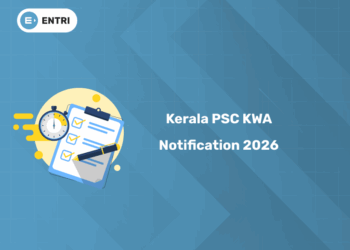Table of Contents
Introduction
When one invests in the securities market, there are risks involved in it. For your information, it’s not just market risk, but also risks related to how grievances are handled. That’s where the Investor Grievance Redressal Committee comes into the picture. This committee plays an integral role in protecting investor rights and instilling market confidence. In this article we will delve deep into what the Investor Grievance Redressal Committee is, why it matters, how it works, and what you as an investor should keep in mind.
The Investor Grievance Redressal Committee (IGRC)
1: What is a stock?
An Investor Grievance Redressal Committee (IGRC) is a governance mechanism set up within a listed entity or by a stock exchange or intermediary to review, handle, mediate and resolve complaints of investors in the securities market. It acts as a bridge between investors who lodge grievances (for example: non-receipt of dividend, failure to transfer share certificates, brokerage disputes) and the entity responsible for resolving them.
The role of IGRC is to ensure that investor grievances are given prompt and fair consideration. And that the entity uses a structured internal mechanism to redress investor complaints. Rather than leaving the investor ad-hoc or uninformed. In many cases, the IGRC is followed by escalation to regulatory or alternate dispute resolution mechanisms if resolution is not achieved.
Learn Stock Marketing with a Share Trading Expert! Explore Here!
Why the IGRC is Important for Investors
- Protects investor confidence: When investors know that complaints will be heard and resolved, trust in the securities market improves. The IGRC is a formal recognition of that promise.
- Ensures accountability: Entities such as listed companies, intermediaries, stock-brokers etc are supposed to respond to investor complaints within the prescribed timeframes. The IGRC brings accountability.
- Promotes transparency: With IGRC mechanisms, complaints, resolutions, timelines are often disclosed and monitored.
- Offers efficient recourse: Instead of investors having to navigate opaque channels or legal suits immediately, the IGRC offers a structured, sometimes faster route. For example, if the IGRC does not resolve, the matter may escalate to arbitration.
- Aids in regulatory compliance: Entities must comply with rules such as Securities and Exchange Board of India (SEBI) Listing Obligations & Disclosure Requirements (LODR) which mandate mechanisms for investor grievances. The IGRC plays an important role in fulfilling those obligations.
Regulatory Framework & Mandates
Several regulatory provisions underpin the need for and functioning of the IGRC:
- The LODR Regulations (Regulation 13) require a listed entity to ensure “adequate steps are taken for expeditious redressal of investor complaints”.
- SEBI has mandated the use of its online portal (SCORES) for complaint registration and tracking by entities.
- Guidance documents state that if an investor is not satisfied with the handling of grievances by a company or intermediary. The investor may lodge the matter with the stock exchange’s designated IGRC or with the exchange/depository.
- The policy documents of companies typically reference an “Investor Grievance Redressal Mechanism/Committee” which includes timelines (21 days etc) for resolution.
Thus the IGRC is not optional, it is a required governance and compliance measure for entities in the securities market.
Structure and Functioning of the IGRC
Structure
- A listed company will typically appoint a Compliance Officer or Grievance Redressal Officer responsible for handling investor complaints as part of its IGRC mechanism.
- At the stock-exchange level, a committee (Investor Grievance Redressal Committee) may be constituted to handle complaints.
- The committee may include senior officials, independent members, representatives of investor services and is empowered to call for documents, mediate disputes, and issue directions.
Functioning
- Complaint intake: Investors lodge a complaint with the company/intermediary first. If unsatisfied, they escalate to the IGRC (or via SCORES) which will mediate.
- Review & mediation: The IGRC examines the grievance, may call both parties, review documents, and attempt an amicable settlement within prescribed timelines.
- Admissibility & decision: If the grievance is found admissible, the committee may direct the entity to resolve it, block funds if necessary, or escalate to arbitration.
- Escalation: If the matter is not resolved via IGRC, further routes such as arbitration, or filing a complaint via SCORES to SEBI, may be exercised.
- Monitoring & disclosure: The company must place the statement of investor complaints before its Board and report to the stock exchanges quarterly.
Timelines
- Many company policies indicate resolution within 21 calendar days for complaints that qualify.
- For complaints escalated through SCORES, entities are required to submit the Action Taken Report (ATR) within 21 days.
Stock Market Training Reviewed & Monitored by SEBI Registered RA
Trusted, concepts to help you grow with confidence. Enroll now and learn to start investing the right way.
Know moreProcess Flow: From Complaint to Resolution
Here is a simplified step-by-step procedure of how a complaint moves through the IGRC mechanism:
- Investor lodges a grievance: through the company’s designated email/portal, or intermediary, noting PAN, folio/client ID, nature of complaint.
- Entity’s internal handling: the Compliance Officer acknowledges receipt, enters into tracking, attempts resolution (e.g., shares are transferred, dividend paid).
- If unsatisfied, escalation to IGRC: the complaint is forwarded to the IGRC (e.g., stock exchange committee or company committee) for review/mediation within the defined timeline (often 15 days for IGRC review).
- IGRC mediation/conciliation: both parties may be called; committee determines admissibility, may block funds if the intermediary member is at fault, and may give directive.
- Final decision or arbitration referral: If IGRC cannot resolve amicably, matter may go to arbitration under exchange bye-laws. Alternatively, if still unresolved, the complaint in SCORES may reach SEBI for a second review.
- Disclosure & monitoring: Entities file details of complaints and resolutions to the Board, quarterly disclosures to stock exchanges, updates via SCORES portal.
Key Challenges and How the IGRC Addresses Them
Challenges
- Lack of awareness among investors about the grievance mechanism or about IGRC itself.
- Delays in resolution or unresolved complaints remain pending.
- Complexity of process, multiple layers of escalation and legalities.
- Limited value of awards in some cases especially where the entity is insolvent.
How IGRC Helps
- Provides a dedicated forum for investor complaints rather than generic customer service channels.
- Sets timelines (e.g., 15-21 days) and structured process, thus reducing arbitrary delay.
- Acts as an intermediate step before a full legal or arbitration route, more accessible, fewer costs.
- Helps in monitoring trends and non-compliance of listed entities with grievance resolution norms, thereby pushing for corrective action.
- Enhances transparency: disclosure of pending complaints, redressal metrics builds accountability.
What Investors Should Know and Do
If you are an investor and wish to leverage the IGRC process, here are key points:
- Check the entity’s grievance mechanism: Most companies provide the name of the Compliance/Grievance Officer, email id, and process in their Investor Grievance Redressal Policy.
- Lodge the complaint early: Provide accurate details – PAN, folio/client ID, nature of grievance, relevant documents.
- Ensure you have approached the company/ intermediary first: The process typically requires you to first approach the entity before escalations.
- Track your complaint: Use the entity’s portal or the SCORES portal (for listed companies/intermediaries) to check status.
- Be aware of timelines: If the IGRC doesn’t act or resolution is not achieved in the given time, ask for escalation to arbitration or regulatory forum.
- Keep documentation of everything: Emails, acknowledgment of complaint, response from entity/IGRC, these will be helpful if you escalate.
- Use the escalation matrix: Some companies publish their escalation matrix, i.e., if the Compliance Officer does not respond in X days, you escalate to the Board sub-committee or IGRC.
- Know your rights: Suppose you are not satisfied with the outcomes of IGRC, you can opt for arbitration, or register a complaint with the regulatory body (via SCORES).
Learn Stock Marketing with a Share Trading Expert! Explore Here!
Key Takeaways
- The Investor Grievance Redressal Committee plays an important part in the securities market by offering a structured forum for investor complaints.
- It is not only a good-to-have, it is required under regulatory norms (e.g., Regulation 13 of LODR) for listed entities.
- For investors, the IGRC mechanism acts as an accessible escalation forum, with defined timelines and mediation/conciliation focus.
- Being aware of and proactive about lodging grievances, tracking them, and escalating when necessary can make the difference between resolution and unresolved complaints, for investors.
- Entities performing well in their IGRC mechanisms lead to credibility, investor trust and compliance.
While the process is robust, delays and low awareness remain challenges; thus investors must know how to navigate the mechanism effectively.
Stock Market Training Reviewed & Monitored by SEBI Registered RA
Trusted, concepts to help you grow with confidence. Enroll now and learn to start investing the right way.
Know moreFrequently Asked Questions
What types of complaints can be handled by the Investor Grievance Redressal Committee?
The IGRC typically handles complaints such as non-receipt of dividends, delayed or non-receipt of share certificates, dematerialisation/rematerialisation issues, non-receipt of annual reports/AGM notices, brokerage disputes or service failures by intermediaries.
Is there a specific time limit within which the IGRC must resolve a complaint?
Yes. While this can vary according to entity, many companies aim for resolution within 21 calendar days of receipt of complaint. Entities must submit an Action Taken Report within 21 days when using the SCORES portal.
What is the next step if the IGRC is unable to resolve the complaint?
If the IGRC fails to resolve the matter within the prescribed timeline or the investor is dissatisfied with the outcome, the complaint may be referred to arbitration (under exchange/depository bye-laws) or escalated to regulatory forums such as the SCORES portal for further review.
Do unlisted companies also have to set up an IGRC?
Regulatory mandates primarily apply to listed entities under the LODR regulations. Unlisted companies may adopt grievance redressal mechanisms voluntarily or under other corporate governance norms, but the specific IGRC norm is for listed entities.
What is the role of the portal SCORES in this context?
SCORES (SEBI Complaints Redress System) is an online portal where investors can lodge complaints against listed companies, intermediaries or market infrastructure institutions if resolution isn’t achieved at the entity level. It also monitors complaint handling via IGRCs and other designated bodies.
Can I skip the IGRC mechanism and directly go to court or consumer forum?
Technically yes, but best practice is to follow the prescribed hierarchy: first approach the company, then the IGRC/mediation mechanism, before going to arbitration or court. Many mechanisms require prior steps be taken.
How can I check how well a company is doing with its IGRC or investor grievance redressal track record?
You can check the company’s annual report for sections on “Investor Grievance Redressal”, look for disclosures of number of complaints pending, number received, number resolved. You may also check the stock exchange website or SCORES portal to see complaint status for that entity.














